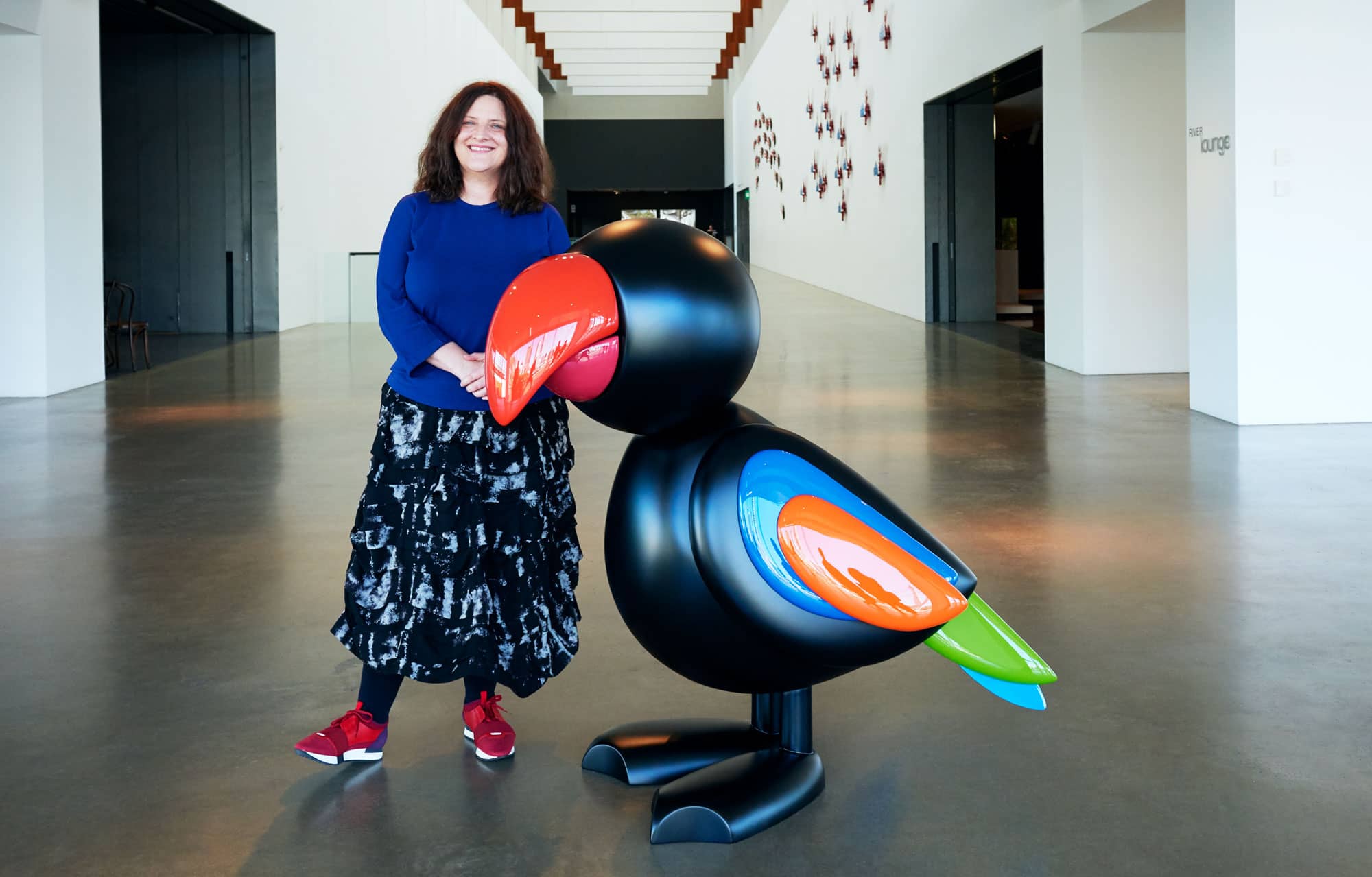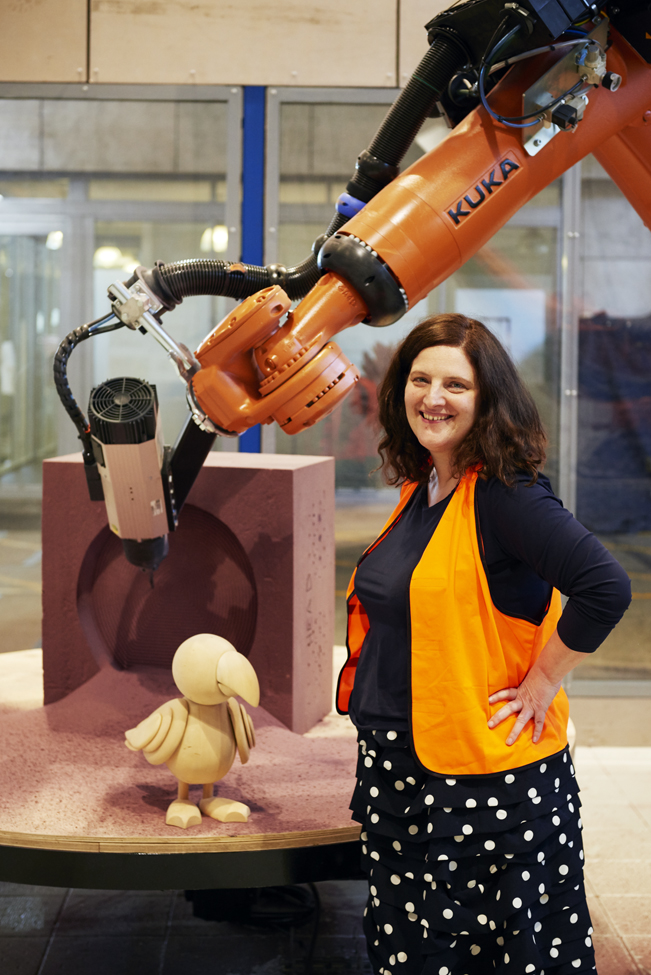Emily Floyd’s 'Poll' Artwork
Australian sculptor Emily Floyd recently worked with Brisbane based public
art fabricators, UAP on a privately commissioned sculpture. The work, titled Poll, was fabricated using advanced manufacturing technologies—including a Kuka six
axis robotic arm.
Emily Floyd’s sculpture, Poll, (pictured below) is a parrot
named after a literary character in Daniel Defoe’s Robinson
Crusoe. Poll
stands at 1.4 metres tall and is made from 18 different
pieces. The body of the parrot is black and there are six colours for the wings, tail, and beak. It is the
first in a series of five ‘literary’ parrots. They are made by combining Floyd’s traditional hand-carving
techniques with advanced manufacturing technologies.
Floyd, who draws from a family background in toy making, creates handmade
scaled models of her sculptures—these models are often referred to as ‘maquettes’. This process meant her
work was ideal for advanced manufacturing processes. Floyd’s maquette for Poll was digitally scanned and
then scaled up to full size using 3D modelling software.
From this digital model, the Kuka six axis robotic arm cut a mould from
compressed blocks of sand. The sand moulds were then used by fabricators in UAP’s workshop to cast each of
the pieces out of aluminium for the sculpture.

###
The Benefit of Working with Robots
In an interview Floyd spoke enthusiastically about the sophisticated
capabilities of robots and how this positively affected the fabrication of her sculpture. She said that,
‘it can make so many more decisions than an artist can, make them really quickly. Thousands of decisions all at once, even about that surface and how to cut it,
how to smooth it.’ Robots are not replacing the handmade, rather they help makers to achieve a higher
level of accuracy.
Reflecting on the quality of the finished sculpture, Floyd was pleased with
the outcome saying that it was, ‘very high [quality] production, perfect, yeah. I’ve done well. It’s a
real achievement. It makes me very proud [of] it and I’m very proud of it.’
Experimenting with Robots earlier in the creative process.
Floyd suggests that it would be beneficial to incorporate robotics earlier
in the artistic process—prior to fabrication—which would lead to, ‘an open-ended inquiry’. She proposed
that robots could also inform creative experimentation where an artist might ask, ‘”What can this do? What
do I know it can do? What might it be able to do?”’ Floyd commented that incorporating robots earlier in
the creative process would result in ‘more experimentation where you don’t know what the outcome is going
to be.’
However, access to this technology is a significant hindrance for artists
who would like to experiment with digital fabrication. Floyd expressed that ‘one of the frustrations that
artists have with expensive technology is that we can only use it once or we don’t have access to it to
experiment with it fully and make it an artwork that really explores it as a means of production. It’s
more that it’s something that this production has that used to achieve a specific art process. In terms of
it being like really integrated into the artwork itself, I wouldn’t say that it’s highly experimental.’
Clearly, the challenge is set, to make advanced manufacturing technology
more available to artists, small scale designers, artisans, and other creatives. Encouraging opportunities
for experimentation with technology in creative pursuits has the potential to lead on to greater
innovation for creative Australian enterprises.
Cost of fabricating art in Australia
The advantages of incorporating robots into large scale, mass production in
the Australian manufacturing sector are already known. The potential payback for smaller scale, bespoke
manufacturing—businesses such as UAP—look just as promising. This is especially in terms of manufacturing
costs and maintaining these businesses onshore.
Floyd commented on the issue of limited access to bespoke manufacturing in
Australia, saying that ‘manufacturing is a huge problem in Australia, because everything’s too expensive.
I work a lot of these artisans who are closing down and you need to basically subsidise them to keep
going, which is very expensive. It becomes just impossible and art is not a real economy.’
Floyd’s reflections on working with advanced manufacturing to create her
sculpture Poll, highlight two important points. Firstly, the need for easier access to robotics
and digital fabrication technology for the creative industries. This will encourage greater
experimentation, leading to the potential benefits of these technologies for artistic, design and creative
making processes. Secondly, Floyd identifies the decline of small scale bespoke manufacturing businesses
in Australia, despite there being a demand for their services. The utilization of advanced manufacturing
by these businesses has the potential to revive Australia’s small scale and artisan
manufacturers.
